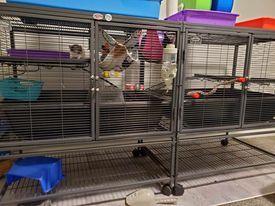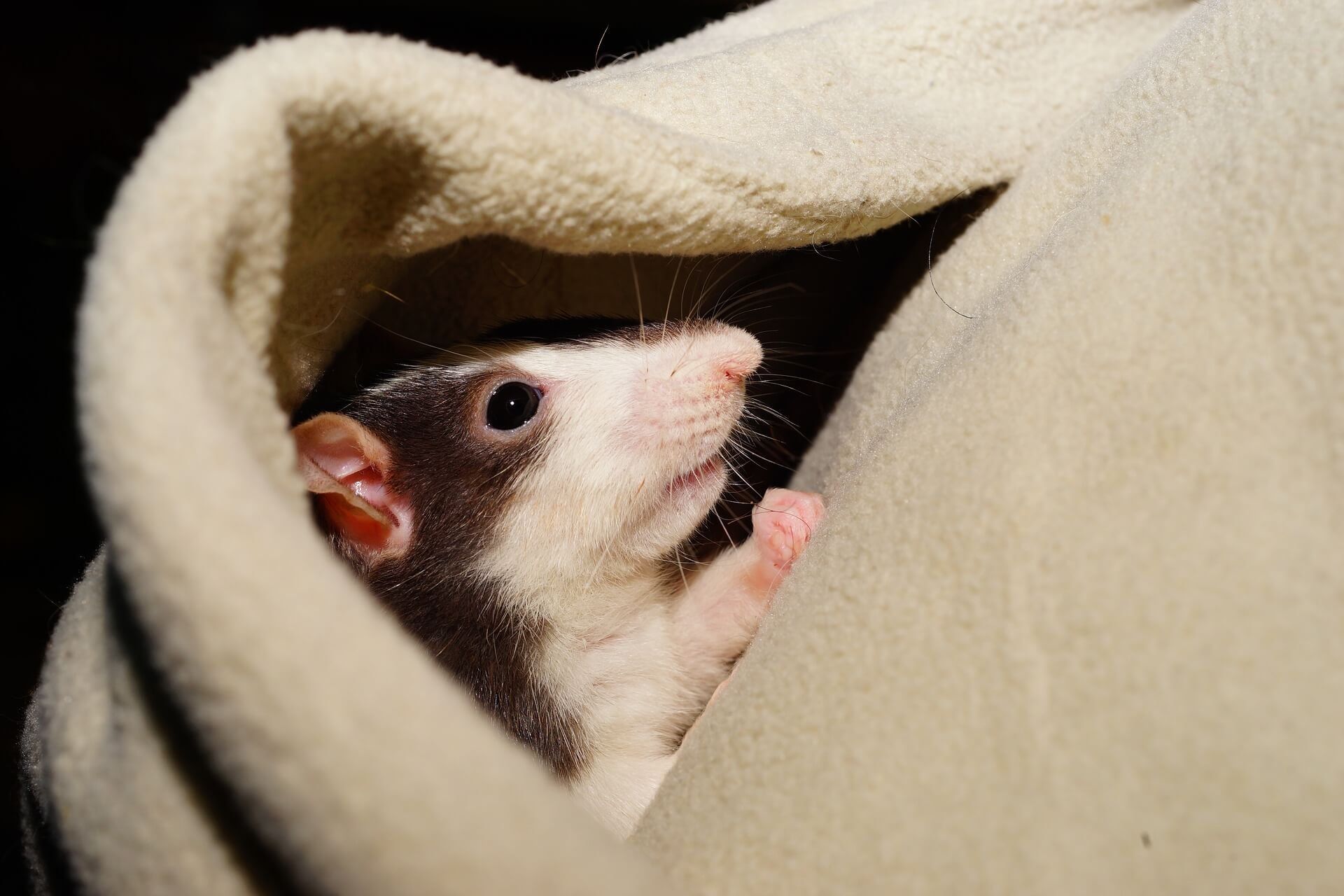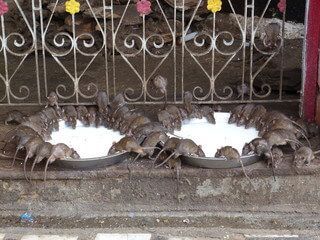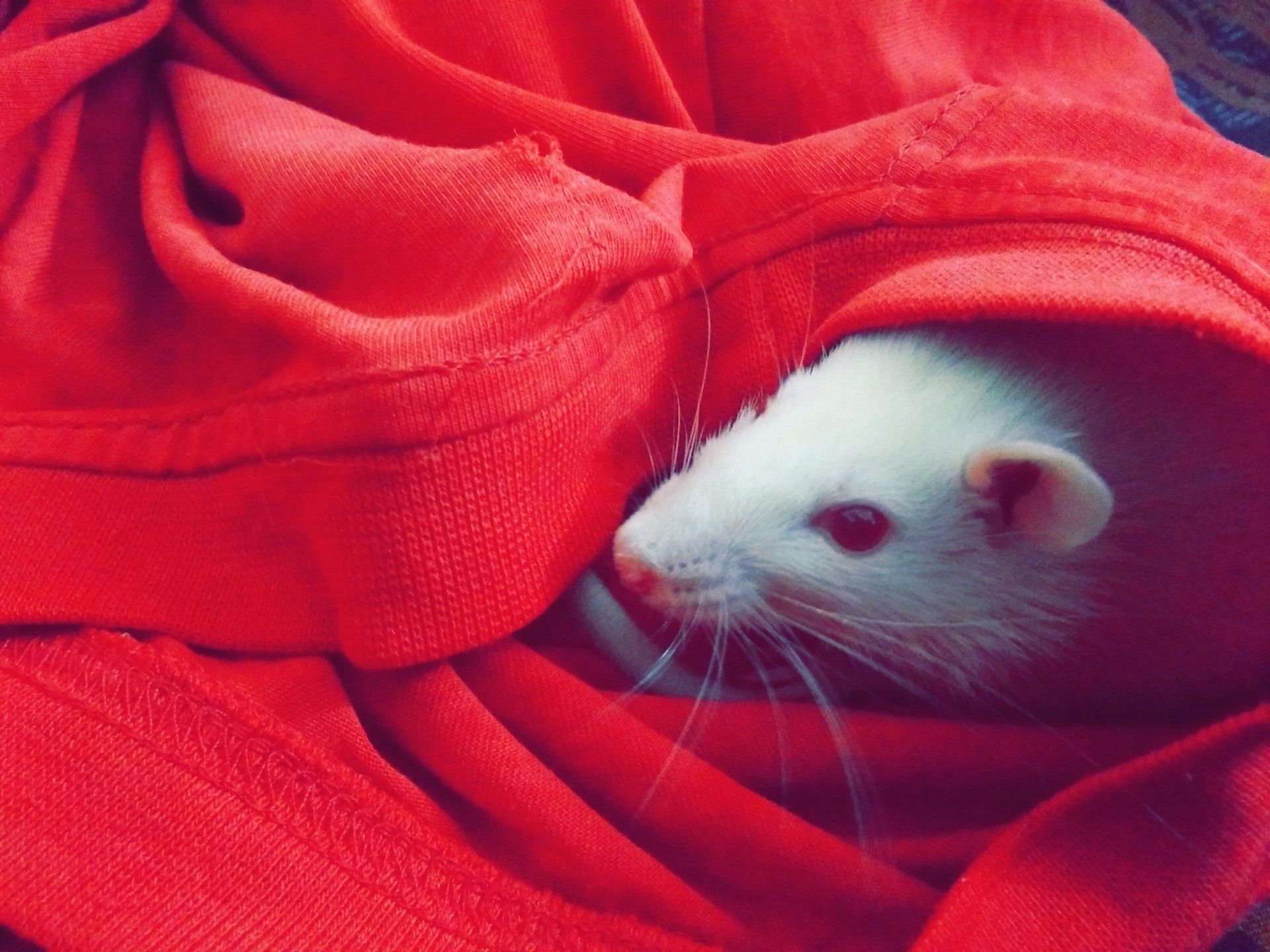Domesticated Rats and Their Fascinating History
This post contains affiliate links and I will be compensated if you make a purchase after clicking on my links.
Domesticated Rats and Their Fascinating History
The history of domesticated rats is a fascinating one, full of twists and turns. What made these common pests into household pets? A combination of intrigue and then passion led from the wild rats to the pet rats we see today all over the world.
While rats have been kept as pets in various countries for thousands of years, domesticated rats as we know them came into being merely 200 years ago in Europe.
From that time, the domesticated rat has waxed and waned in popularity throughout the years, and the fancy rat is now a pet loved by many people around the world!
The History of Domesticated Rats
Let’s be honest, the fact that we own rats weirds some people out. But we love them! So how exactly did this hated rodent make its way into the hearts of millions worldwide?
Hundreds of years ago, the black rat ran rampart over Europe. These rats immigrated from Asia around the first century AD, and through the fleas they carried, spread the bubonic plague throughout Europe.
However, the current fancy rat did not descend from the black rat, but from the larger brown rat, that actually helped drive out the black rat from Europe. These two breeds of rats do not usually coexist, and as the brown rat was larger and more suited to the environment, it won out.
That’s right, the next time someone thinks your fancy rat is gross cause they spread the plague you can throw that back at them. Your rats' descendants were heroes!
Black rats (also called roof rats) are sometimes kept as pets, but are not as far in the domestication process as brown rats.
Brown rats, also known as Norway rats, or Rattus Norvegicus, came to Europe from Asia in a mass immigration likely caused by a natural disaster in Asia in the 1700s. While they lived in Europe in small numbers before this, this mass entrance caused their numbers to surge.
With the increased numbers of these large rodents running the streets, something had to be done, so rat-catching began as a profession. Sadly, most of the rats caught at this time were sold to be used in rat baiting.
Rat baiting involved putting a large number of rats into a pit, releasing terrier(s) into the pit, and betting on how long it would take the dog to kill the rats.
Despite the mass execution of rats in this manner, what saved certain “brown rats” was their unusual color. While most of these wild rats were brown, certain genetic mutations caused some to be albino, or have other color variations.
These rats were kept and bred by those involved in rat catching and baiting, instead of being fed to dogs, and thus the rat fancy began!
Jack Black and Jimmy Shaw were big influences in the beginning of the rat fancy. A rat-catcher and well known sporting manager, they would have had quite a few rats pass through their hands.
When rats would be caught presenting unusual color, Jack Black would breed them or sell them to women as pets. Jack Black became so well known as a rat-catcher he became the royal rat-catcher for Queen Victoria!
While these men started the rat fancy in the mid-1800s, it wasn’t until 1901 that a woman named Mary Douglas, known as the mother of the rat fancy, asked for her rats to be allowed into a fancy mouse show in England.
The National Mouse Club permitted her rats, and one of them even went on to win “Best in Show”! During her life, due to the increase in showing of rats, the name of the club was changed to The National Mouse and Rat Club.
Sadly, in the few years after her death in 1921, interest in rats as pets waned again, and the National Mouse Club dropped Rats from the name. Through the next half-century, many people attempted to start rat societies and were unsuccessful.
It wasn’t until 50 years later in 1976 that the first rat society was formed by Geoff Izzard and Joan Pearce, called the National Fancy Rat Society. The rat fancy has held strong since then, with many breeders working on preserving the integrity of the pet rat, and many participating in rat shows.
The history of the domesticated rat in America is similar to its beginning in Europe. Brown rats made their way over to America by ship, eventually mostly replacing the black rats already living there due to their hardier nature.
Albino rats in America, whether they were imported or caught like in Europe, became a staple for experimentation, leading to the albino lab rat, which eventually had a docile nature bred into it.
Through breeding for specific traits over many years, we now have varieties such as dumbo rats, rex rats, and many other types of pet rats. Besides having many interesting colors and coat types, the fancy rat also has a much friendlier disposition due to breeding for temperament.
In 1978, the first American club that included rats, the Mouse and Rat Breeders Association, was formed. Five years later, the American Fancy Rat and Mouse Association began.
As you can see, the official organizations for rats are quite young still. I look forward to seeing all they do for domesticated rats in the years to come!
Are Domesticated Rats A Different Breed?
The answer to this question is yes and no. While there is not enough of a difference to warrant a different species, domesticated rats and wild rats are quite different.
Both the modern fancy rat and the wild brown rat have the same Latin name – Rattus Norvegicus. But besides their scientific name and basic look, there isn't a lot of similarity. Domesticated rats have an additional sub-species name - Rattus Norvegicus Domestica.
Domesticated rats tend to be larger than wild rats, have increased fertility, and are a lot friendlier. The pet rat lifespan is also longer than that of the wild rat, though that is mostly due to being in captivity as opposed to having to fend for itself in the wild.
A very interesting difference is the willingness to mate. In captivity, it is very difficult to get wild rats to mate. Domesticated rats, on the other hand, if left together, can get pregnant in as short as 10 hours after giving birth!
However, the most noticeable difference on first look is the color! Most wild rats have a grey or brown coat, and while variation exists, it is rare. Pet rats, on the other hand, come in a wide assortment of colors and coat types.
If you were to go out and catch a wild rat for a pet (something I DO NOT recommend) and compare with your pet rats, you would see a much different disposition. While domesticated rats have a relative trust of humans, it would be very difficult to get a true wild rat to trust you.
What This Means For Rats Today
Much has been done to decrease the negative stigma towards our adorable pets. As you can see if you’ve read this far, domesticated rats are far removed from wild rats in looks and personality, among other aspects.
Continued education and furthering of understanding of rats and their genetics will only further our knowledge of these wonderful creatures and improve our ability to understand them.
Not only this, but it will help other people understand what amazing pets rats can make! Most of us have people in our lives who see our pet rats as nothing more than pests, but I hope continued education helps these people see what great animals they are.
Thankfully, the rat clubs that exist in Europe and America are still going strong, and setting standards for breeding and showing rats. Now, rats are owned as pets all over the world. It is unlikely that pet rats will ever fade out of style again!
If you are interested in getting some fancy rats and want to know the cost commitment before diving in, check our rat cost guide!
Final Thoughts
Our pet rats' history is pretty cool. Around 200 years ago, our rats' descendants were scampering around the streets of Europe, scavenging for their next meal. Now we keep them in our homes, and get to enjoy all the personality and love they have to offer!
Know any cool history stories about rats? Share below!





